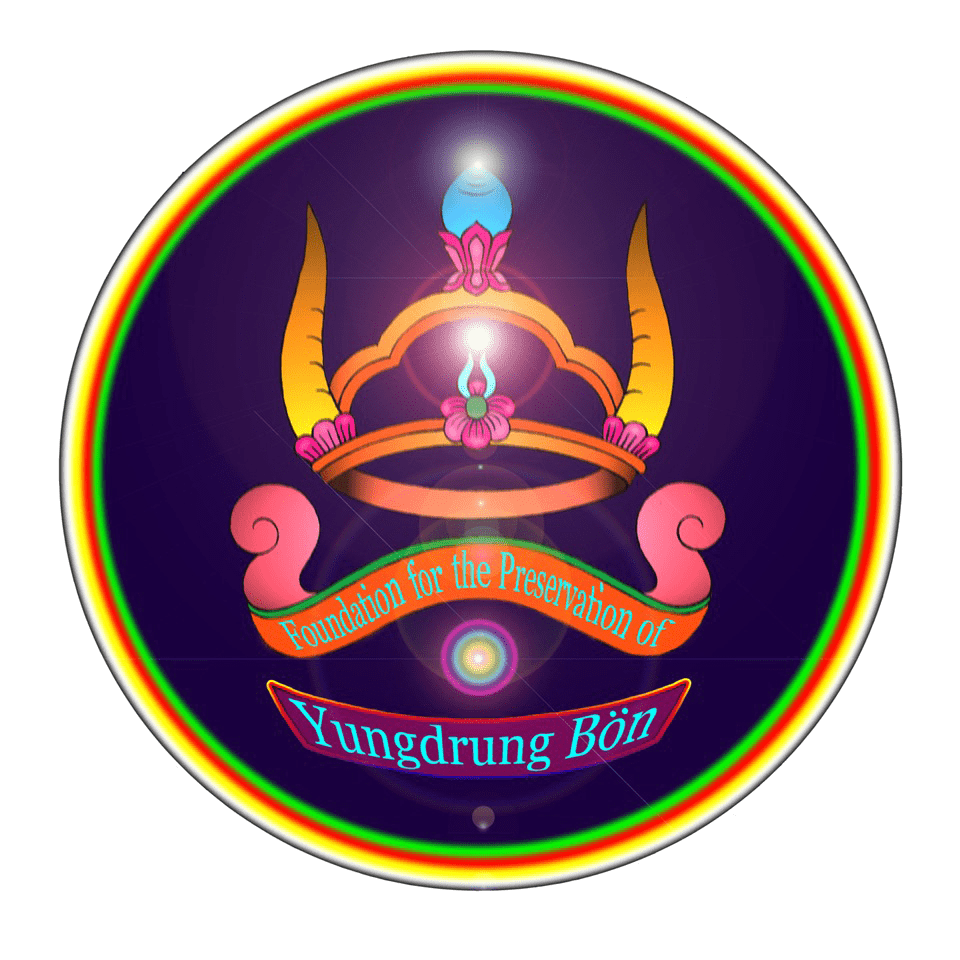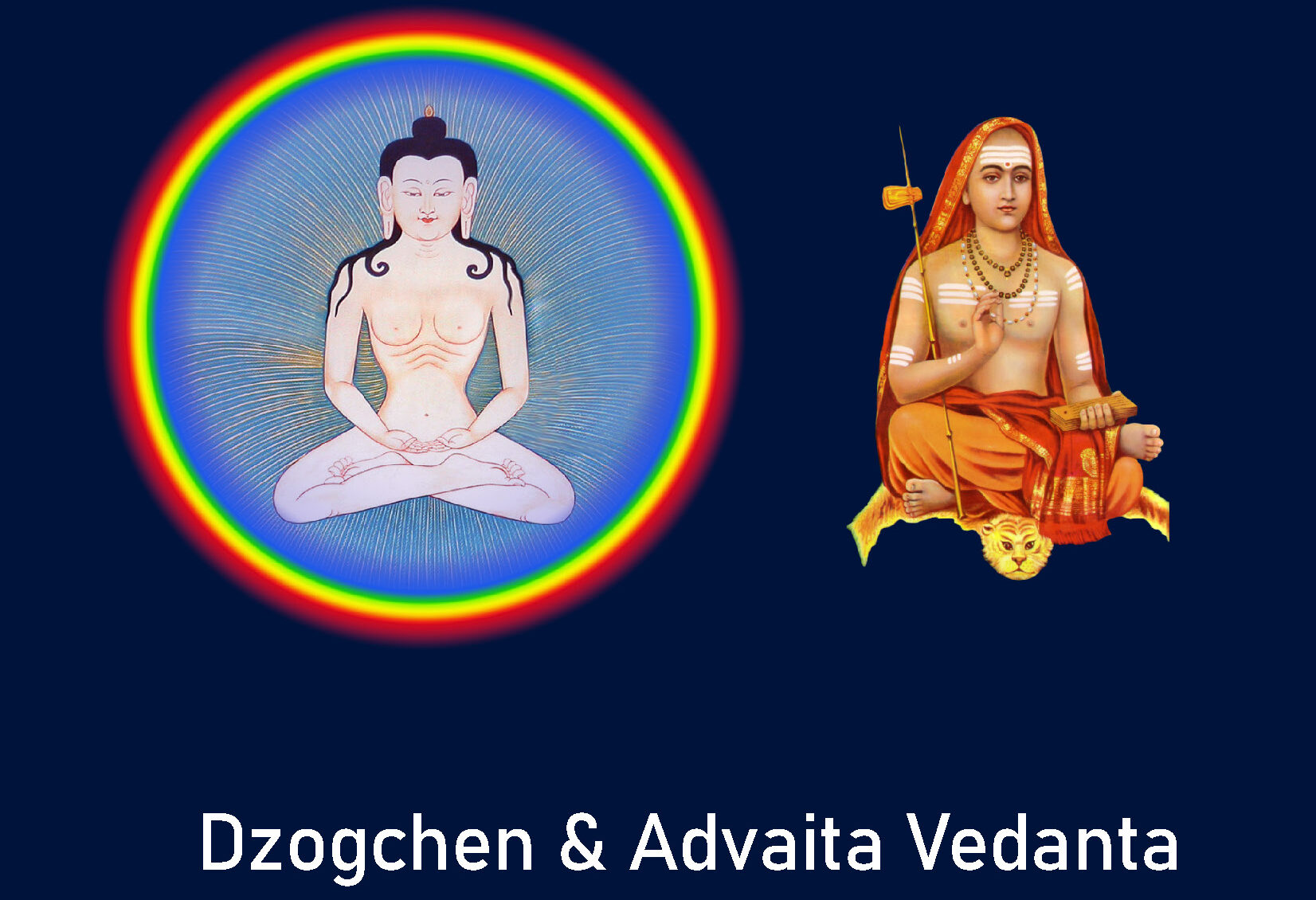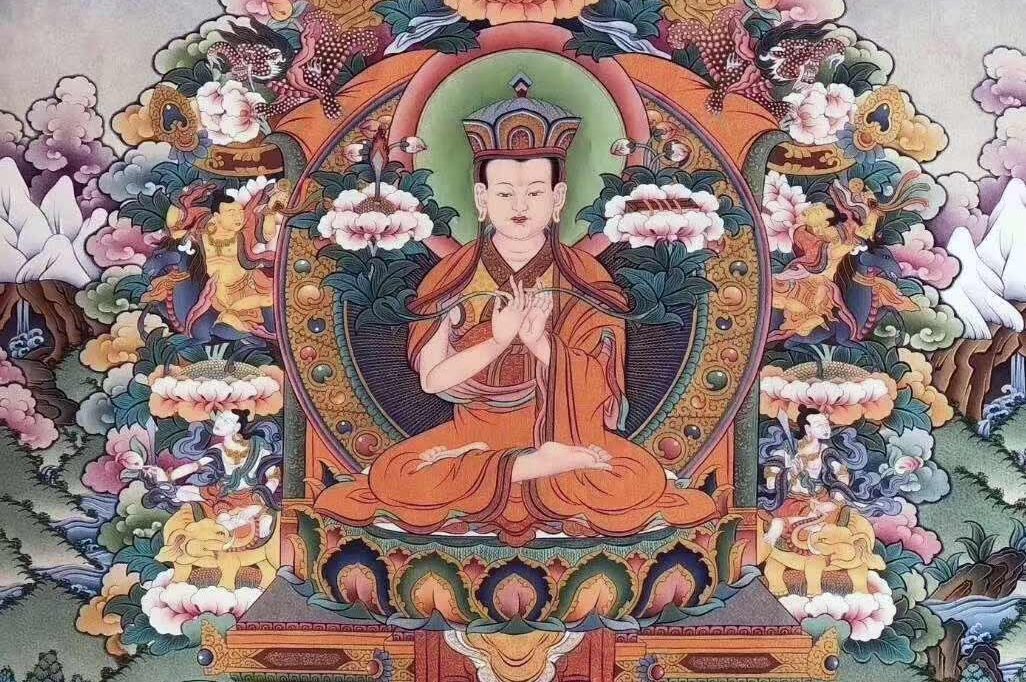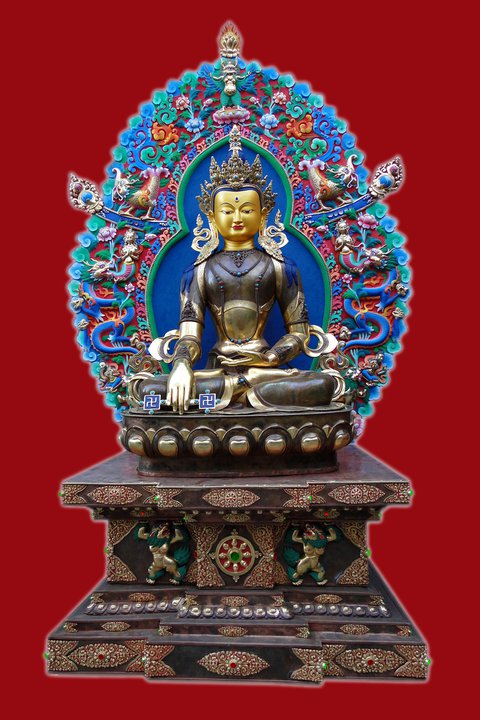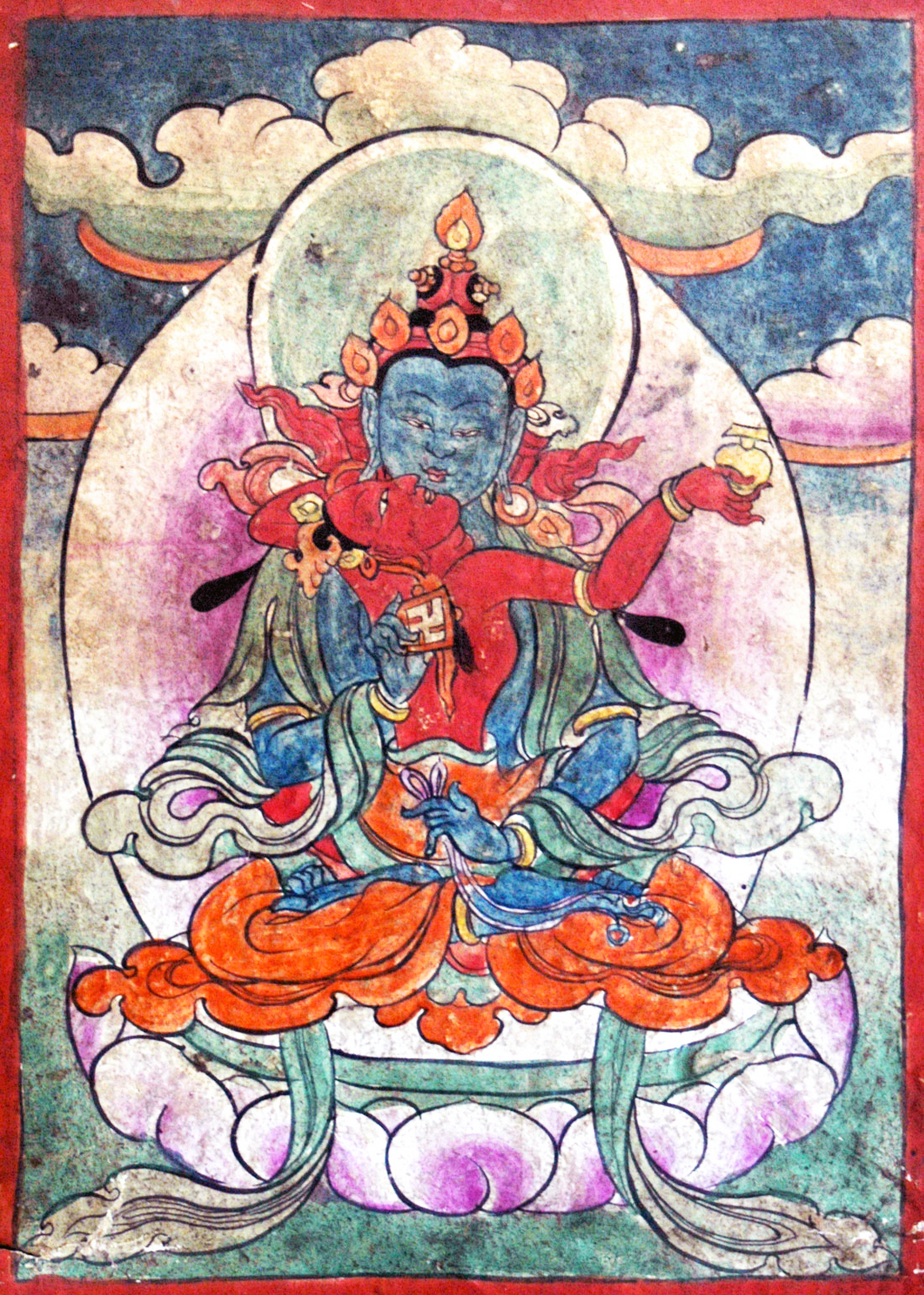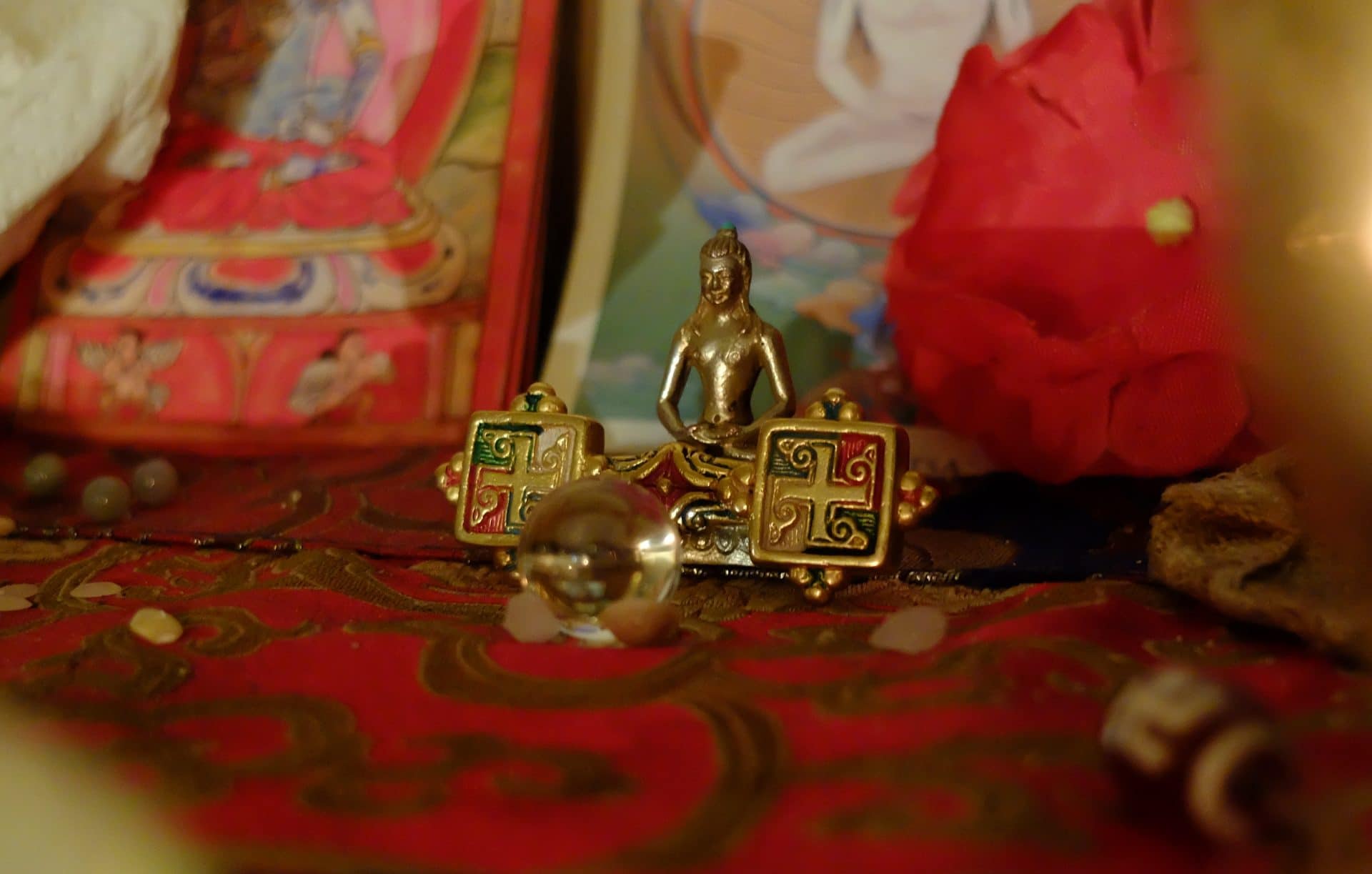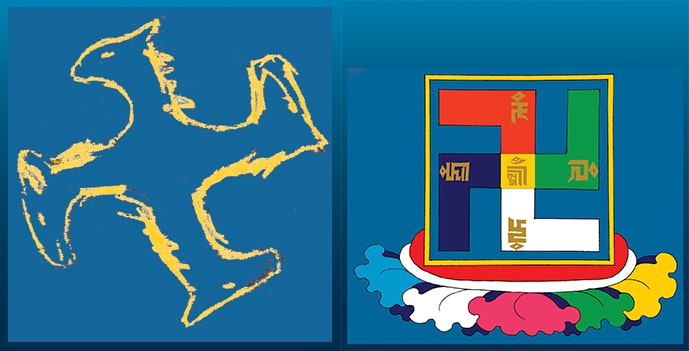This page is dedicated to articles, research and study materials covering a range of topics connected with the Bön religion and the culture of Zhang Zhung, Tibet, Central and Inner Asia.
Эта страница посвящена статьям, исследованиям и исследованиям материалов, охватывающих ряд тем, связанных с религией бöн и культурой Жанг-Жунга, Тибета, Центральной и Внутренней Азии.
གཅོ་བཟའ་བོན་མོ།
Choza Bonmo
Known as one of the Six Female Bon Siddhas, Choza Bonmo is positioned in Bon histories as one of the most important female practitioners of Yungdrung Bon. According to traditional Bon narratives, not only was she instrumental in preventing the destruction of Yungdrung Bon in central Tibet in the eighth century but she also played a key role in its restoration.
READ FULL ARTICLEConnections between Siberian Shamanism, Bön and Taoism
This article is an adaptation of a talk given in Italian on 22nd January, 2023 for Tianwu – Scuola di Medicina Classica Cinese e Arti Taoiste.
READ FULL ARTICLEThe Multiverse in Yungdrung Bön
Based on teachings and explanations by Yongdzin Lopön Tenzin Namdak, Khenpo Tenpa Yungdrung and Geshe Gelek Jinpa given 1995–2006.
In both Bön and Buddhist texts alike, it is generally said that our universe is flat. However, as everything appears to sentient beings through the ripening of their karma, there is in fact no such thing as a fixed shape or a fixed universal perception; we can see different forms.
Dzogchen & Advaita Vedanta
by Dmitry Emakov
Over the years I have had many discussions on the topic of Dzogchen and Vedanta, particularly Advaita Vedanta, with friends and practitioners of Yungdrung Bön and various schools of Indo-Tibetan Buddhism. Recently, this topic came up again in conversation when a friend brought to my attention a section of Loel Guiness’ book Rainbow Body that contains an exposition of the Dzogchen view. We had a lively discussion about what was written there after my recent talk at Watkins Books in London and it is this discussion that has prompted me to write this article since, from the perspective of Dzogchen practice, confusing the view of Dzogchen with the view of Vedanta blocks the way to liberation, to attaining the Buddhahood of the rainbow body. Instead, such confusion opens the way for rebirth in the formless realm of long-living gods, a continuation of samsara. So a clear understanding of the differences between the views of Dzogchen and Vedanta is of fundamental importance for anyone who wishes to study and practise Dzogchen.
The Importance of Mt. Kailash in the Bön Religion
Presented by Dmitry Ermakov, Foundation for the Preservation of Yungdrung Bön, UK, at the 5th International Conference on the Phenomenon of the Holy Mt. Kailash, Universitӓt Hamburg, 25 March 2022.
Abstract:
Being the most important sacred geographical feature of Zhang Zhung and Tibet, Mt. Kailash was venerated by Bönpos of various creeds from times immemorial. In this talk I will firstly give a brief discourse on the four types of Bön religions to set the scene. I will then examine how the Dhami tradition of Humla, Nepal is connected to the Kailash region. The rest of the talk will focus on the role Mt. Kailash plays in Yungdrung Bön teachings and history: the meaning of its name in the Zhang Zhung language; Mt. Kailash and Lake Mapang as la-receptacles of Zhang Zhung emperors and the people of Zhang Zhung and Tibet; the Buddha Tönpa Shenrab connection; Mt. Kailash in the context of Bönpo Tantra; the extermination of Ligmincha royal line and Srongtsen Gampo’s conquest of Zhang Zhung, and Trisong Deutsen’s Cultural Revolution; Dzogchen masters Tapihritsa and Nangzher Lödpo and the first restoration of Bön; destruction of Bön by Hla Lama Yeshe Wö in Ngari; the survival of Zhang Zhung Nyengyu in Western Tibet and its spread to Dölpo and Mustang; and finally, the return and restoration of Yungdrung Bön around Mt. Kailash in recent times.
“Tönpa Shenrab Miwo and Buddha Shakyamuni”: brief discourse by Yongdzin Rinpoche
Before Tönpa Shenrab descended to this planet, he was in the Deva Loka palace.[5] There, he had a very special disciple called Hlabu Dampa Tog Karpo,[6] Son of Gods, Sage with a Crystal Head-ornament. This disciple was a previous incarnation of Buddha Shakyamuni. At that time, heretics[7] were destroying human health and wealth on Earth so there was a lot of suffering. Tönpa Shenrab saw the connection between the spread of false teaching and the human suffering, and he saw he was able to control it through his first disciple. So Tönpa Shenrab ordered Hlabu Dampa Togkar to go to India. That was the centre from where the heretic teachings spread.
READ FULL ARTICLEHistory of the Bön religion
Taught by Yongdzin Tenzin Namdak Rinpoche
Paris, October 16-17, 2004
I will explain briefly what my religion, Yungdrung Bön, is. Generally, the name Bön is very popular in Tibetan indigenous culture and religion, but there are three completely different aspects within this name.
READ FULL ARTICLEThe Magical Duel between Milarepa and Naro Bönchung: Who Really Won?
Presented by
Dmitry Ermakov, Foundation for the Preservation of Yungdrung Bön, UK, at the 5th International Conference on the Phenomenon of the Holy Mt. Kailash, Universitӓt Hamburg, 26th March 2022.
Abstract:
Probably everyone who has even a little interest in Tibet knows or has at least heard of the magical contest between Buddhist yogi Milarepa and Bönpo sorcerer Naro Bönchung. The tale has been told and retold for centuries. But does this story have any grounding in real events? Did this magical duel really happen on Mount Kailash? And who was the real winner? I will attempt to answer these questions by looking into Bönpo and Buddhist sources on Milarepa, recent comparative studies on Milarepa’s hagiographies as well as by referring to oral traditions of Gurungs and Tamangs of Nepal.
How the Teachings of Yungdrung Bön came to Tibet
An informal lecture by Yongdzin Lopön Tenzin Namdak Rinpoche at Shambahala Centre, Paris, 19 May, 1998
I would like to say a little about history, about where the Teachings come from. Now they come from Tibet, but their origin was Zhang Zhung. Zhang Zhung was a kingdom in early times and the Tibetan civilization comes from the Zhang Zhung civilization. Zhang Zhung was one of the biggest kingdoms in early times, until it was destroyed by the Tibetan king Trisong Deutsen in the seventh century. Since then it has been slowly invaded by Tibet and the Teachings emigrated from Zhang Zhung to Tibet. Zhang Zhung existed in what is now the West and North of Tibet, and Tibet itself was only the central part (i.e. Utsang).
READ FULL ARTICLEThree Drenpa Namkhas in Yungdrung Bön
by Dmitry Ermakov
In this article, we will take a brief excursion into the story of Drenpa Namkha, one of the most famous and powerful masters in Yungdrung Bön. According to Yungdrung Bön sources, there were three major emanations of Drenpa Namkha throughout history, and all were great yogis and scholars. The later two, Drenpa Namkha of Zhang Zhung and Tibetan Drenpa Namkha, are both renowned for preserving the Yungdrung Bön teachings in times of persecution and bear the title The Defender (of the Teachings) in the Degenerate Age.
READ FULL ARTICLE665th Anniversary of Nyamme Sherab Gyaltsen – a Concise Life Story
by Dmitry Ermakov
Today, (the fifth day of the first lunar month according to the Tibetan calendar), Bönpos celebrate the 665th anniversary of Nyamme Sherab Gyaltsen (Tib. Mnyam-med Shes-rab rgyal-mtshan, 1356-1415), a reincarnation of an early Bönpo mahasiddha (Tib. grub-thob), Tonggyung Thuchen (Tib. Stong-rgyung mthu-chen).
READ FULL ARTICLEAnniversary of Tönpa Shenrab Miwo’s Birth – a brief introduction to The Twelve Deeds
by Dmitry Ermakov
Today, the fifteenth day of the twelfth Tibetan month, we celebrate the 18,038th anniversary of the First Deed of Yungdrung Bön’s Buddha Tönpa Shenrab Miwoche (Tib. Ston pa Gshen rab Mi bo che) – the Deed of Birth (Tib. Sku bltams-pa’i mdzad-pa). During his life, Shenrab Miwo manifested The Twelve Deeds of Buddha (Tib. Mdzad-chen bcu-gnyis). Here is a brief summary of this traditional account:
READ FULL ARTICLEIntroduction to the Zhang Zhung Nyengyud Dzogchen Lineage
by Dmitry Ermakov
from
Masters of the Zhang Zhung Nyengyud:
Pith Instructions from the Experiential Transmission of Bönpo Dzogchen
Main topics discussed:
– Historical background to Bönpo Dzogchen
– Qualities of Master and disciple
– Introduction to the Path of Dzogchen
– Introduction to the Lineage Masters of Zhang Zhung Nyengyud
– Structure of Zhang Zhung Nyengyud cycle
– Comparison with writings on Dzogchen
by Longchen Rabjampa
– Lineage Tree
– Zhang Zhung Garab and Garab Dorje
– An excerpt from the “Golden Spoon” discovered by Yungdrung Lingpa translated specially for this publication by Yongdzin Rinpoche
– A Mongol Connection
– Experiential Transmission
– Modern-day Transmission
Swastika Symbology in Bө Murgel and Bön
The swastika has been used as a symbol of good luck, happiness and truth by very diverse cultures in many locations all over the globe since prehistory. Today it can still be seen throughout Asia as a symbol of general good luck. However, this ancient symbol has been much maligned.
This short article explains swastika symbology in four points:
– Swastika controversy
– Swastika as a solar symbol
– Swastika in the Prehistoric Bön of Eurasia and Bө Murgel
– Swastika in Yungdrung Bön
Historical annals show Gna’-shul Palace and Khyung-lung Dngul-mkhar (Silver Palace of Garuda Valley) in Central Zhang-zhung to be one and the same
by Lama Tsultrim Phuntsok of Gurjam Monastery
Translated by Pöntsang Phuntsok Namgyal and Dmitry Ermakov
Edited, additional notes and Wylie transliteration by Dmitry Ermakov
English text edited by Carol Ermakova
Main topics to be discussed:
Zhang-zhung Khyung-lung Dngul-mkhar and ‘Om-po sgo-bzhi;
Ston-pa Gshen-rab;
erected castles;
Gna’-shul Palace;
stone statue of Dran-pa Nam-mkha’.
Bönpo Dzogchen – Base, Path & Fruit
Excerpted from D. Ermakov, Bön, written for the Encyclopaedia of Buddhist Philosophy (2011).
Translated from Russian by C. Ermakova.
Bön is a complex phenomenon which was once spread far beyond Tibet, but do its origins lie beyond the Tibetan Plateau? I shall examine this by looking at certain cultural phenomena.
Firstly, I would argue there are four types of Bön: gdod ma’i bon, g.yung drung bon, bon gsar ma and what I have dubbed Mixed Bön, which comprises a conglomeration of the first three types along with various elements from other religions.
Secondly, I take a closer look at the Deer Cult which was common throughout Eurasia from Palaeolithic times until today using archaeological evidence such as Deer Stones as well as myths and ritual costumes from France, the Caucuses, South Siberia, Mongolia, Amdo and West Tibet to demonstrate the importance of the Sky Deer. I then relate this to the Bon culture of Zhang Zhung, in particular to the smrang from a g.yang ‘gug ritual.
Having established possible routes this cross-pollination of ideas and cultural mores may have taken to and from Tibet, I move onto the question of whether Bon mdo sngags gsems gsum may also have originated outside Tibet. In view of the lack of textual evidence, I base my argument on concrete archaeological finds, namely rock carvings of stupas/mchod rten found in Gilgit and Ladakh. I then compare these with the depictions of Bönpo mchod rten described in gZi brjid.
In the light of the breadth and depth of the Bön tradition, a multi-disciplinarian approach is needed to better understand this multifaceted phenomenon and its multiple origins.
Краткая биография Чозы Бöнмо
Чоза Бöнмо (gco bza’ bon mo / co za bon mo) – важная женская фигура в бöнских текстах по ранней тибетской религии и играет важную роль в конфликте между бöном и буддизмом, как его описывают бöнские историки.
Читать статьюТöнпа Шенраб Миво и Будда Шакьямуни
Многие могут задаться вопросом, как исторический Будда Шакьямуни связан с Тöнпа Шенрабом Миво и чем он отличается от Тöнпа Шенраба бöнской традиции. Йонгдзин Ринпоче объясняет связь между Буддой Тöнпа Шенрабом Миво, Буддой Шакьмуни и их учениями.
Читать статьюТри Дрэнпа Намкхи юнгдрунг бöна
В этой статье мы предпримем краткий экскурс в историю Дрэнпа Намкхи (Dran-pa nam-mkha’), одного из самых известных и могущественных мастеров юнгдрунг бöна. Согласно бöнским источникам, в истории существовало три основных эманации Дрэнпа Намкхи, и все они были великими йогинами (grub-thob chen-po) и учеными. Два последних, Дрэнпа Намкха из Жанг-Жунга и тибетский Дрэнпа Намкха, известны сохранением учений юнгдрунг бöна во времена гонений и носят звание Защитника (учений) в эпоху вырождения (Snyigs-ma’i mgon-po).
Читать статьюДвенадцать деяний
Будды Тöнпа Шенраба
Тöнпа Шенраб — чье настоящее имя было Мура Тахен (тиб. Dmu-ra ta-han) — родился в пятнадцатый день первого весеннего месяца в государстве Олмо Лунгринг, центральном регионе более обширной страны Тагзиг. Согласно традиционной бöнпо хронологии (тиб. Bstan-rtsis) это произошло в год Деревянной Крысы, то есть в 16017 году до н.э.
Читать статьюБÖН: Древние духовные традиции Средней Азии и Тибета
Статья дает сжатую информацию о бöне — древних духовных традициях Средней и Внутренней Азии, и Тибета: доисторическом бöне и юнгдрунг бöне, а также более поздних типах бöна: новом бöне и смешанном бöне. Основное внимание в статье уделяется различным аспектам юнгдрунг бöна, доктрины Средне-азиатского Будды Тöнпа Шенраба Миво, таких как: краткая история, три пути и четыре категории текстов, космология, теория достоверного познания, четыре категории практикующих и дзогчен.
Статья была изначально написана Дмитрием Ермаковым для Энциклопедии Буддизма, но прошла редактуру и была сильно урезана. Вариант представленный здесь, включает статью в полном формате и с некоторыми дополнениями.
Символизм свастики в бөө мүргэле и бöне
Свастика использовалась как символ удачи, счастья и истины различными культурами во многих географических регионах нашей планеты с доисторических времен и в настоящее время свастика широко используется по всей Азии как символ счастья, удачи, благополучия и имеет много уровней смысла в разлиных течениях бöна.
Читать статьюArticoli in italiano
Breve biografia di Choza Bönmo
Choza Bönmo (gco bza’ bon mo/co za bon mo) è una importante figura femminile nella narrativa Bön della piu antica religione Tibetana, giocando un ruolo nel conflitto che gli storici Bön descrivono tra Bön e Buddismo.
leggi l’articolo